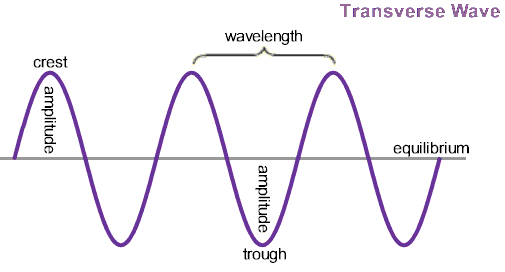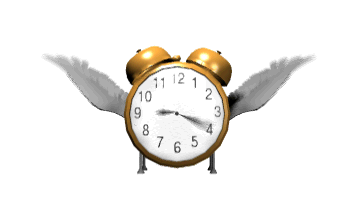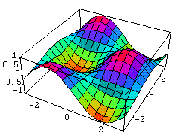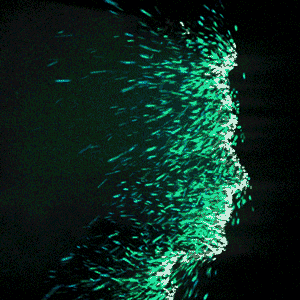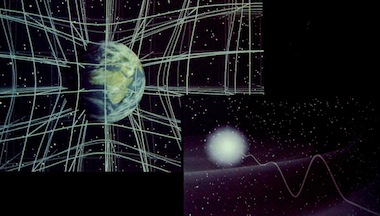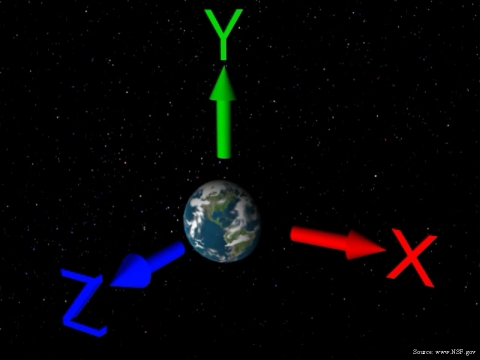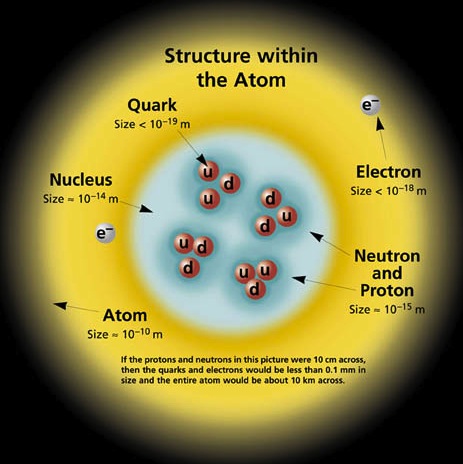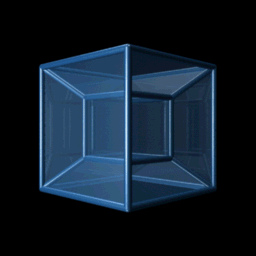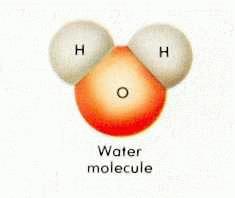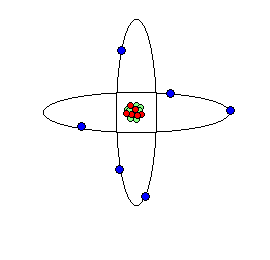Navigating the site:
 Stephen W. Hawking
Stephen W. Hawking
A Brief History of Relativity, Time, and Brane New World (2001)
"Toward the end of the nineteenth century, scientists believed they were close to a complete description of the universe."
" . . . in 1905, he (Einstein) wrote three papers that both established him as one of the world's leading scientists and started two conceptual revolutions – revolutions that changed our understanding of time, space and reality itself."
p. 4.
Einstein's significance | Comprehending time | Envisioning spacetime | Hidden existences | Hawking's views | Book's contents | Historical dates to know | vocabulary
Scientists before Einstein's work was confirmed by observations:
"They imagined that space was filled by a continuous medium called the 'ether.' Light rays and radio signals were waves in this ether, just as sound is pressure waves in air."
p. 4.
Max Planck Institute General Relativity, on-line page.
"However, in a paper written in June 1905, Einstein pointed out that if one could not detect whether or not one was moving through space, the notion of ether was redundant."
p. 6 - 9.
The Summer triangle serves as a stellar calendar, marking the seasons. The stars Deneb, Vega & Altair the brightest members of the Summer Triangle light up the eastern twilight dusk in middle to late June.
When the Summer Triangle is seen high in the south to overhead at dusk and early evening, itsís change of position indicates the start of fall. See Earth & Sky.
Einstein's significance | Comprehending time | Envisioning spacetime | Hidden existences | Hawking's views | Book's contents | Historical dates to know | vocabulary
Time and the theory of relativity
"A good theory will describe a large range of phenomena on the basis of a few simple postulates and will make definite predictions that can be tested. If the the predictions agree with the observations, the theory survives that test, though it can never be proved correct."
"This has been confirmed by a number of experiments, including one in which two accurate clocks were flown in opposite directions around the world and returned showing slightly different times."
"The speed of light is independent of their motion and is the same in all directions."
"This required the abandonment of the idea that there is a universal quantity called time that all clocks would measure. . . . The times of two people would agree if the people were at rest with respect to each other, but not if they were moving."
p.9.
"Einstein had overthrown two of the absolutes of nineteenth-century science: absolute rest as represented by the ether, and absolute or universal time that all clocks would measure. Many people found this an unsettling concept."
"Nevertheless, the theory of relativity is now completely accepted by the scientific community, and its predictions have been verified in countless applications."
p. 11.
Max Planck Institute General Relativity, on-line page.
Einstein the man | His relativistic insights | On Albert Einstein | The famous equation's meaning
Einstein's significance | Comprehending time | Envisioning spacetime | Hidden existences | Hawking's views | Book's contents | Historical dates to know | vocabulary
Spacetime an extrasensory reality of our existence
"the flow of time will slow for an observer in motion, or in the presence of a strong gravitational field."
p. 208.
"positions of points in a plane" (p. 204)
"His idea was that mass and energy would warp spacetime in some manner yet to be determined. Objects . . . would try to move in straight lines through spacetime, but paths would appear to be bent by gravitational field because spacetime is curved."
"Einstein. . . . It was his idea to relate gravity to the warping of spacetime."
p. 19.
"The new theory of curved spacetime was called general relativity to distinguish it from the original theory without gravity, which was now known as special relativity. It was confirmed in spectacular fashion in 1919, when a British expedition to West Africa observed a slight bending of light from a star passing near the sun during an eclipse."
pp. 19-21.
Special relativity | Spacetime curvature | Time | General relativity | Strings | Universal expansion | Sun | Time travel?
Einstein's significance | Comprehending time | Envisioning spacetime | Hidden existences | Hawking's views | Book's contents | Historical dates to know | vocabulary
Two competing views:
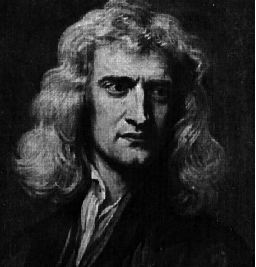 Isaac Newton gave us the first mathematical model for time and space in his Principia Mathematica, published in 1687. . . .Time was separate from space and was considered to be a single line. . . . that was infinite in both directions.
Isaac Newton gave us the first mathematical model for time and space in his Principia Mathematica, published in 1687. . . .Time was separate from space and was considered to be a single line. . . . that was infinite in both directions.
![]()
![]()
![]() "Time itself was considered eternal."
"Time itself was considered eternal."
p. 32.
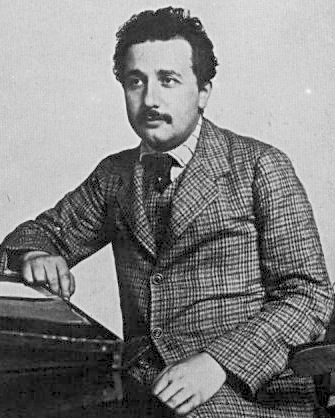 "Einstein's theory of relativity, which agrees with a large number of experiments, shows that time and space are inextricably interconnected.
"Einstein's theory of relativity, which agrees with a large number of experiments, shows that time and space are inextricably interconnected.
One cannot curve space without involving time. Thus time has a shape."
p. 33.
". . . it spurred the greatest change in our perception of the universe in which we live since Euclid wrote," 300 BCE.
"Einstein's general theory of relativity transformed space and time from a passive background in which events take place to active participants in the dynamics of the universe."
Compare to page 35.
spacetime
The Universe in a Nutshell
 Contents
Contents
1 – A Brief History of Relativity, p. 3.
2 – The Shape of Time, p. 29.
3 – The Universe in a Nutshell, p. 67.
4 – Predicting the Future, p. 101.
5 – Protecting the Past, p. 131.
6 – Our Future? Star Trek or not? p. 155.
7 – Brane New World, p. 173.
Glossary, p. 202.
Einstein's significance | Comprehending time | Envisioning spacetime | Hidden existences | Hawking's views | Book's contents | Historical dates to know | vocabulary
Unseen dimensions hidden in reality.
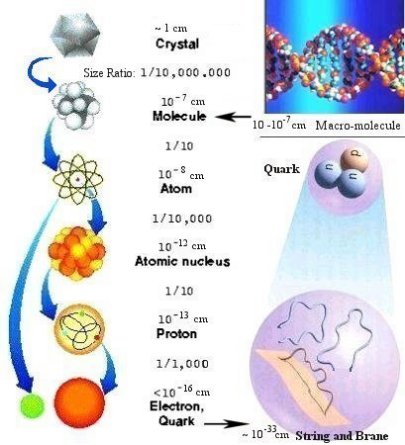 "Spacetime may be similar: on human, atomic, or even nuclear physics length scales, it may appear four dimensional and nearly flat. On the other hand if we probe to very short distances using extremely high energy particles, we should see that spacetime was ten– or eleven–dimensional."
"Spacetime may be similar: on human, atomic, or even nuclear physics length scales, it may appear four dimensional and nearly flat. On the other hand if we probe to very short distances using extremely high energy particles, we should see that spacetime was ten– or eleven–dimensional."
pp. 178-179.
"If all the additional dimensions were very small, it would be difficult to observe them. However, there has recently been the suggestion that one or more of the extra dimensions might be comparatively large or even infinite. The idea has the great advantage that it might be testable by the next generation of particle accelerators or by sensitive short-range measurements of the gravitational force.
"They would imply that we lived in a brane world, four dimensional surface or brane in a higher-dimensional spacetime.
All atoms are structurally products of the strong nuclear & electro-weak nuclear forces.
The electrically charged particles
Energy levels
A stylized Lithium atom. Hypothetical behavior of Bohr's Hydrogen atom.
Matter and nongravitational forces like the electric force would be confined to the brane."
p. 180.
Einstein's significance | Comprehending time | Envisioning spacetime | Hidden existences | Hawking's views | Book's contents | Historical dates to know | vocabulary
What is the origin of our current concepts of the material universe?
"These observations (Mount Wilson) revealed that the farther other galaxies are from us, the faster they are moving away. The universe is expanding, with the distance between any two galaxies steadily increasing with time."
p. 21.
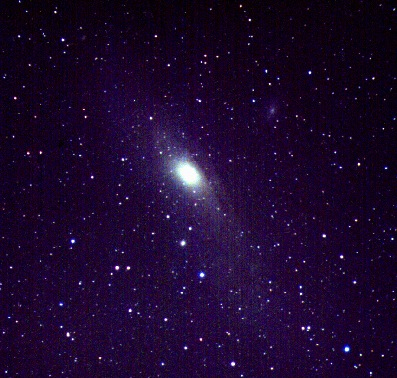
The Andromeda Galaxy, seen here, is actually moving away from our galaxy: the Milky Way in an expanding universe.
Special relativity | Curvature of spacetime | Time | General relativity | Universal expansion | Time travel?
"Supersymmetry is a feature of our modern mathematical models that can be described in various ways. One way is to say that spacetime has extra dimensions besides the dimensions we experience."
Nutshell, p. 49.
supersymmetric string theory
"Strings, . . . are one dimensional extended objects. They have only length. Strings in string theory move through a background spacetime. Ripples on the string are interpreted as particles. . . . The ripples will correspond to bosons or fermions."
p. 52.
"To start with, it was realized that strings are just one member of a wide class of objects that can be extended in more than one dimension."
Paul Townsend… "gave them the name 'p-branes.' A p-brane has length in p dimensions.""All the p-branes could be found as solutions of the equations of supergravity theories in 10 or 11 dimensions . . . . the idea was that the other 6 or 7 dimensions are curled up so small that we do not notice them; we are only aware of the remaining four large and nearly flat dimensions."
Nutshell, p. 54.
"there is a web of relationships, so-called dualities"
"a web of unexpected relationships, called dualities, between the models.". . . "given the name M- theory."
"Not to take this web of dualities as a sign we are on the right track would be a bit like believing God put fossils in the rocks in order to mislead Darwin about the evolution of life. "Nutshell, pp. 56-57.
Special relativity | Curvature of spacetime | Time | General relativity | Universal expansion | Time travel?
Einstein's significance | Comprehending time | Envisioning spacetime | Hidden existences | Hawking's views | Book's contents | Historical dates to know | vocabulary
"The reason general relativity broke down at the big bang was that it was not compatible with quantum theory, the other great conceptual revolution of the early twentieth century."
Nutshell, p. 24.
Compare:
"Radiation from black holes was the first example of a prediction that depended on both great theories of this century, general relativity and quantum mechanics."
Hawking, The Theory of Everything, p. 92
"This means that the laws of physics need not breakdown at the origin of the universe. The state of the universe and its contents, like ourselves, are completely determined by the laws of physics, up to the limit set by the uncertainty principle. So much for free will."
Hawking, The Theory of Everything, p. 94.
Einstein's significance | Comprehending time | Envisioning spacetime | Hidden existences | Hawking's views | Book's contents | Historical dates to know | vocabulary
When did crucial events happen?
Pythagoras as painted by Raphael in the Vatican Gallery's "The School of Athens."
Euclid, Elements of Geometry. The plane as an abstract two dimensional space.
1st cent. CE
Ptolemy: maps of the earth and the heavens for "picturing the world."
1514 Nicholas Copernicus: the sun is at the center of the six observable planets.
1609
Johannes Kepler & Galileo Galilei affirm the solar system; sun-centered planets. 1687 Isaac Newton, Principia Mathematica Naturalis Causae.
1783 John Michell postulates that the gravitational field (forces) of a massive star might stop light from escaping defining dark stars or now black holes. Nutshell, pp. 110-111.
1823 Heinrich Olbers' paradox: "why doesn't the night sky look uniformly bright?" 1887 Albert Michelson & Edward Morley compared the speed of light in two perpendicular beams finding no diurnal or annual differences in their speed. 1905 Special Theory of Relativity, Albert Einstein acceleration and gravity are indistinguishable, there is no ether, lights peed is a constant velocity to any observer.
1915 General Theory of Relativity, Albert Einstein (static universe and a cosmological constant) gravity affects light-quantum particles.
1922 Alexander Friedmann, expanding universe is deduced from General Theory of Relativity.
1924 other galaxies discovered by Edwin Hubble.
1928 Chandrasekahr limit proposed on stellar masses predicts existence of white dwarf stars.
1929 Edwin Hubble discovers star's luminosity based on Doppler shift appear in the red end of the spectrum and thus confirms an expanding universe.
1935 Hans Bethe explains the carbon cycle that accounts for stellar fusion of all the elements from hydrogen fusion into helium, and then into carbon during a super nova. 1939 Robert Oppenheimer explains what occurs when massive stars implode: a region in space-time is created from which nothing may ever escape.
1951 Roman Catholic Church explains the Big Bang Theory is in accord with scripture.
1953 Franklin & Wilkins work is used by Watson and Crick to determine the precise structure of the DNA molecule: double helix. 1963 The first detection of quasars – quasi-stellar objects that emit high energy radio waves. "Quasars are far flung galaxies where a massive central black hole is driving the emission of huge amounts of electromagnetic radiation." BBC-Science
1965 Penzias & Wilson, Bell Labs, detect the universal microwave radiation evidence of our cosmic origins.
1965 Roger Penrose theorizes that "a singularity" exists in a collapsed star of sufficient mass: later called a "black hole."
1969 The term black hole is coined by John Wheeler to explain the collapse of massive stars.
1971 Hawking shows how some radiation may escape a black hole, but that "time would come to an end inside a black hole." 1977 Particle physicists working at Fermilab announce they observed evidence of the bottom quark 1981 Vatican conference on cosmology and the big bang as creation. 1995 Particle physicists working at Fermilab announce they observed evidence of the top quark 2012 Particle physicists at CERN announce their finding of a Higgs boson Special relativity | Curvature of spacetime | Time | General relativity | Strings | Universal expansion | Time travel?
Einstein's significance | Comprehending time | Envisioning spacetime | Hidden existences | Hawking's views | Book's contents | Historical dates to know | vocabulary
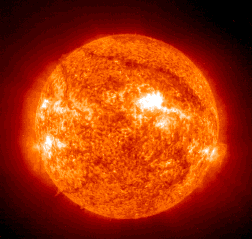
"Our own sun contains about 2 percent of these heavier elements because it is a second or third generation star. It was formed some five thousand million years ago out of a cloud of rotating gas containing the debris of earlier supernovas."
Hawking, The Theory of Everything, p. 103.
"...a small amount of the heavier elements collected together to form the bodies that now orbit the sun as planets like the Earth."
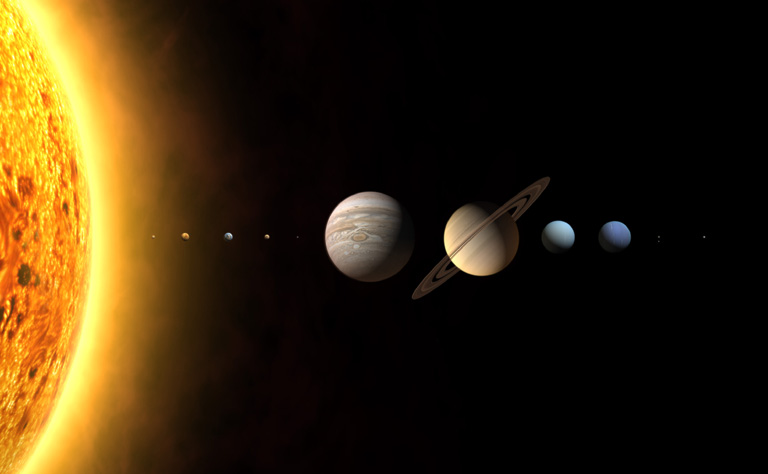
"So long as the universe had a beginning that was a singularity, one could suppose that it was created by an outside agency. But if the universe is really completely self contained, having no boundary or edge, it would be neither created nor destroyed. It would simply be. What place then, for a creator?"
Hawking, The Theory of Everything. p. 126.
"it is forbidden by the second law of thermodynamics. This says that disorder or entropy always increases with time. In other words, it is Murphy's Law–things get worse."
"The increase of disorder or entropy with time is one example of what is called an arrow of time, something that gives direction to time and distinguishes the past from the future."
![]()
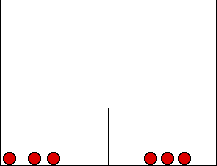
![]()
Special relativity | Curvature of spacetime | Time | General relativity | Universal expansion | Time travel?
Einstein's significance | Comprehending time | Envisioning spacetime | Hidden existences | Hawking's views | Book's contents | Historical dates to know | vocabulary
"If one takes the positivist position, as I do, one cannot say what time actually is. All one can do is describe what has been found to be a very good mathematical model for time and say what predictions it makes."
Hawking, Nutshell, p. 31.
![]()
The inseparability of space and time; is called space-time.
"One cannot curve space without involving time as well. Thus time has a shape. However, it appears to also have a one way direction. . . ."
pp. 33-35.
By curving space and time, general relativity changes them from being passive background against which events take place to being active, dynamic participants in what happens."
"It would make no sense to ask what happened before the beginning or after the end, because such times would not be defined."
p. 35.
"Our past is pear shaped."
"If one follows our past light cone back in time (having originated in a single dense point), it will be bent back by matter in the early universe. The whole universe we observe is contained within a region whose boundary shrinks to zero at the big bang. This would be a singularity, a place where the density of matter would be infinite and classical general relativity would break down."
p. 41.
Three varieties of
the arrows of time: ![]()
![]()
- Thermodynamic, increasing entropy, randomness, or disorderliness; general disarray.
- Psychological, we recall the past but not the future, informed memory.
- Cosmological, universal expansion rather than contraction – means spacetime is "pear shaped."
Hawking, Nutshell, p. 35, 138. & The Theory of Everything, p. 131
Time travel?
"Chronology Protection Conjecture:"
"the laws of physics conspire to prevent time travel by macroscopic objects."
"Although time loops are allowed by the sum over histories, the probabilities are extremely small. Based on the duality arguments . . . I estimate the probability . . . as less than one in ten with a trillion trillion trillion trillion trillion zeros after it."
The Universe in a Nutshell : p. 153.
Einstein's significance | Comprehending time | Envisioning spacetime | Hidden existences | Hawking's views | Book's contents | Historical dates to know | vocabulary
![]() Chapter One A Brief History of Relativity
Chapter One A Brief History of Relativity
"How Einstein laid the foundations of . . . general relativity and quantum theory."
"Albert Einstein, the discoverer of the special and general theories of relativity . . . ."
"Toward the end of the nineteenth century, scientists believed they were close to a complete description of the universe."
The Universe in a Nutshell, p. 4.
A 1920 photograph of Albert Einstein in his early forties.
p. 5.
"By the century's end, discrepancies in the idea of an all-pervading ether began to appear. It was expected that light would travel at a fixed speed through the ether but that if you were travelling through the ether in the same direction as the light, its speed would appear lower, and if you were travelling in the opposite direction of the light, its speed would appear higher."
p. 6.
Einstein abandoned this concept of the ether as "redundant."
p. 7.
"This required abandoning the idea that there is a universal quantity called time that all clocks would measure."
"This has been confirmed by a number of experiments, including one in which two accurate clocks were flown in opposite directions around the world. . . ."
p. 9.
"Einstein's postulate that the laws of nature should appear the same to all freely moving observers was the foundation of the theory of relativity, so called because it implied that that only relative motion was important. Its beauty and simplicity convinced many thinkers, but there remained a lot of opposition."
"Einstein had overthrown two of the absolutes of nineteenth-century science:
- absolute rest
- absolute or universal time"
"Many people found this an unsettling concept . . . .the unease continued. . . "
" . . the theory of relativity is now completely accepted by the scientific community, and its predictions have been verified in countless applications."
p. 11.
"a very important consequence of relativity is the relation between mass and energy."
"Mass and energy are equivalent, as is summed up by Einstein's famous equation E = M C 2.
"To accelerate a particle to the speed of light would be impossible because it would take an infinite amount of energy."
p. 12.
"Although the theory of relativity fit well with the laws that governed electricity and magnetism, it was not compatible with Newton's law of gravity. This law said that if one changed the distribution of matter in one region of space, the change in the gravitational field would be felt instantaneously everywhere else in the universe."
p. 14.
"Einstein . . . realized that there is a close relationship between acceleration and a gravitational field."
p.16.
"in 1912 Einstein . . . realizing that the equivalence would work if the geometry of spacetime was curved and not flat, . . . ."
p.17.
"His idea was that mass and energy would warp spacetime in some manner to be determined. Objects such as apples or planets would try to move in straight lines through spacetime, but their paths would appear to be bent by a gravitational field because spacetime is curved."
"It took Einstein to realize that it is spacetime which is curved. (1913)"
p. 18.
Einstein's significance
"The new theory of curved spacetime was called general relativity to distinguish it from the original theory without gravity, which was now known as special relativity. It was confirmed in a spectacular fashion . . . ."
p. 19.
"Here was direct evidence that space and time are warped, and it spurred the greatest change in our perception of the universe in which we live. . . . "
"Einstein's general theory of relativity transformed space and time from a passive background in which events take place to active participants in the dynamics of the universe. This led to a great problem that remains at the forefront of physics in the twenty-first century."
p. 21.
"General relativity completely changed the discussion of the origin and fate of the universe."
p.22.
"So Einstein's theory does imply that time has a beginning, although he was never happy with the idea."
"Einstein was even more reluctant to admit that general relativity predicted that time would come to an end for massive stars when they reached the end of their life and no longer generated enough heat to balance the force of their own gravity, which was trying to make them smaller."
p. 23.
"a new picture of reality called quantum mechanics."
"Instead, the more accurately one determined a particle's position the less accurately one could determine its speed and vice versa. Einstein was horrified by this random, unpredictable element in the basic laws and never fully accepted quantum mechanics."
"excellent agreement with observations"
"They are the basis of modern developments in chemistry, molecular biology,and electronics and the foundation of the technology that has transformed the world in the last fifty years."
p. 26.
"The world has changed far more in the last hundred years than in any previous century. The reason has not been new political or economic doctrines but the vast developments in technology made possible by advances in basic science. Who better symbolizes those advances than Albert Einstein?
p. 26.
" . . . but an equation is for eternity."
Next
Einstein's significance | Comprehending time | Envisioning spacetime | Hidden existences | Hawking's views | Book's contents | Historical dates to know | vocabulary
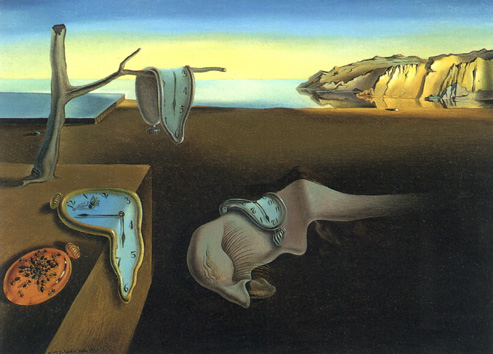
"Einstein's general relativity gives time a shape. How this can be reconciled with quantum theory."
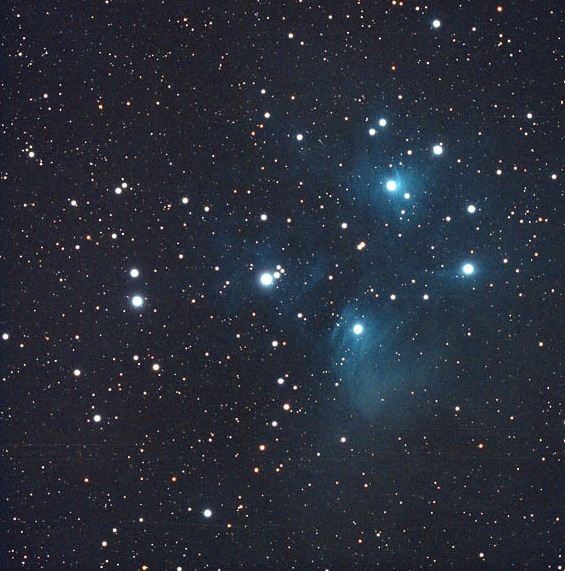
The Pleiades constellation, is 430 light years away from Earth and has long been used by astronomers to mark time as this cluster appears in the months between November and April. Called the seven sisters by the ancient peoples of Asia Minor the word is from the Greek to sail as their appearance in the morning and night sky heralded the start of safe navigation in the Mediterranean Sea. Also called the seed-stars in New Mexico because the disappearance of these stars marked a start to the planting season in spring.
EarthSky
"What is time?"
"Nothing puzzles me like time and space. . . "
Charles Lamb.
p. 31.
"But it was a contradiction only within the context of the Newtonian mathematical model, in which time was an infinite line, independent of what was happening in the universe."
" . . . in 1915, a completely new mathematical model was put forward by Einstein, the general theory of relativity."
". . . our model of time and space is still based on what Einstein proposed."
Einstein's revolutionary paper.
p. 34.
"General relativity combines the time dimension with the three dimensions of space to form what is called spacetime."
"In general relativity, on the other hand, time and space do not exist independently of the universe or each other."
p. 35.
"However, in the theory of relativity, which agrees with a large number of experiments, time and space are inextricably tangled up. One cannot curve space without curving time as well. Thus time has a shape."
p. 35.
Thus time has a shape.
"to being active participants in what happens."
"In general relativity, spacetime is curved not only by massive objects in it but also by the energy in it. Energy is always positive, so it gives spacetime a curvature that bends paths of light rays toward each other."
p. 36.
Einstein's significance | Comprehending time | Envisioning spacetime | Hidden existences | Hawking's views | Book's contents | Historical dates to know | vocabulary
![]() Chapter Three The Universe in a Nutshell
Chapter Three The Universe in a Nutshell
"The Universe has multiple histories, each of which is determined . . . ."
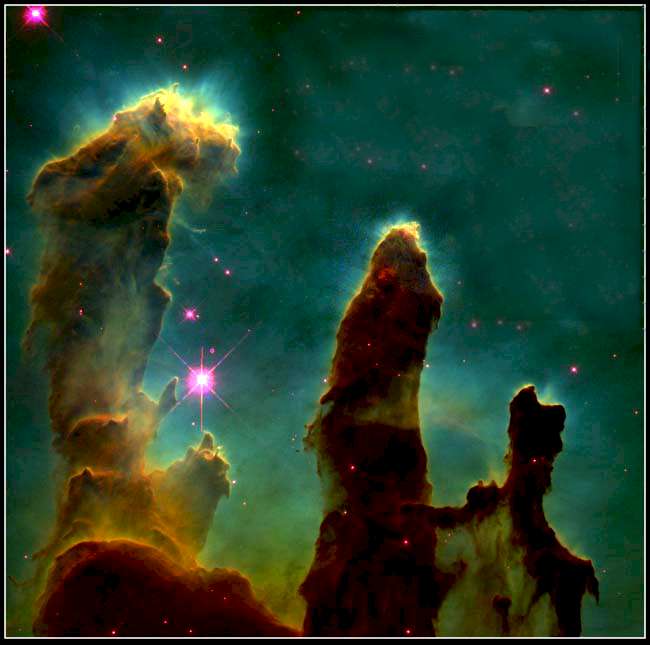
"The most obvious thing about space is that it goes on and on and on. This has been confirmed by modern instruments such as the Hubble telescope, which allows us to probe deep into space. What we see is billions and billions of galaxies of various shapes and sizes."
p. 69.
"Although the universe seems to be much the same at each position in space, it is definitely changing in time. This was not realized until the early years of the twentieth century."
p. 71.
"Something must have happened in the past to make the stars light up a finite time ago, which means that light from very distant stars has not had time to reach us yet. This would explain why the sky at night isn't glowing in every direction."
p. 72.
"In 1923, Hubble (Edwin Hubble) discovered that many faint patches of light, called nebulae, were in fact other galaxies, vast collections of stars like our sun but at a great distance. In order for them to appear so small and faint, the distances had to be so great that light from them would have taken millions or even billions of years to reach us. This indicated that the beginning of the universe couldn't have been just a few thousand years ago.'
pp. 73-75.
"But the second thing Hubble discovered was even more remarkable . . . . To their great surprise , they found that nearly all galaxies are moving away. Moreover, the farther they are from us, the faster they are moving away."
p. 75.
"The universe is expanding."
p. 76.
"Roger Penrose and I were able to show that Einstein's general theory of relativity implied that the universe and time itself must have had a beginning in a tremendous explosion."
p. 76.
" . . . no star could have been shining longer than ten to fifteen billion years, the time since the big bang."
p. 79.
"While the theorems that Penrose and I proved showed the universe must have had a beginning, they didn't give much information about the nature of the beginning. . . . scrunched up [crushed] into a single point of infinite density."
p. 79.
Einstein's significance | Comprehending time | Envisioning spacetime | Hidden existences | Hawking's views | Book's contents | Historical dates to know | vocabulary
![]() Chapter Four Predicting the Future
Chapter Four Predicting the Future
How the loss of information in black holes may reduce our ability to predict the future.


"In other words, if scientific determinism holds, we should in principle be able to predict the future. . . . Of course, in practice even something a simple as Newton's theory of gravity produces equations we can't solve exactly for more than two particles."
"The trouble is that the sequence of events is not repeatable."
p. 104.
"At first sight, determinism would also seem to be threatened by the uncertainty principle, which says we cannot measure accurately both the position and the velocity of a particle at the same time."
p. 105.
"However good our computer is, if we put lousy data in, we will get lousy predictions out."
p. 105.
"We now realize that the wave function is all that can be well defined. We cannot even suppose that the particle has a position and velocity that are known to God but are hidden from us."
"Even God is bound by the uncertainty principle and cannot know the position and velocity. He can only know the wave function."
p. 107.
"The situation was different in the general theory or relativity, in which spacetime was not flattened but curved, and distorted by the matter and energy in it."
p. 109.
"Einstein himself never believed in black holes. . . . "
pp. 111-113.
•Kaku
Einstein's significance | Comprehending time | Envisioning spacetime | Hidden existences | Hawking's views | Book's contents | Historical dates to know | vocabulary
![]() Chapter Five Protecting the Past
Chapter Five Protecting the Past
Is Time travel possible?
"The Basis of all modern discussions of time travel is Einstein's general relativity."
p. 135.
" . . . Einstein's equations made space and time dynamic by describing how they were curved and distorted by the matter and energy in the universe."
"But there was now the possibility that spacetime could be warped so much that you could go off in a spaceship and come back before you set out."
p.135.
"This book will not go into a . . . discussion of free-will. Instead it will concentrate on whether the laws of physics allow spacetime to be so warped that a macroscopic body. . . can return to its own past."
pp. 136-138.
Einstein can't be quite right " . . .because we observe that matter is subject to uncertainty and quantum fluctuations."
p. 138.
Grandfather paradox:
"The first is Einstein's general relativity, which assumes that the universe has a well-defined history without any uncertainty."
"In this, we consider matter to behave according to quantum theory, with uncertainty and quantum fluctuations, but spacetime to be well defined and classical."
p. 138.
"Finally, there is the full quantum theory of gravity, whatever that may be. In this theory, where not just matter but also time and space themselves are uncertain and fluctuate, it is not even clear of how to pose the question of whether time travel is possible."
pp. 138-139.
"In 1931 the mathematician Kurt Gödel proved his famous incompleteness theorem about the nature of mathematics. The theorem states that within any formal system of axioms, such as present-day mathematics, questions always persist that can neither be proved nor disproved on the basis of axioms that define the system. In other words, Gödel showed that there are problems that cannot be solved by any set of rules or procedures."
Gödel's theorem set fundamental limits on mathematics. It came as a great shock to the scientific community, since it overthrew the widespread belief that mathematics was complete system based on a single logical foundation. Gödel's theorem, Heisenberg's uncertainty principle, and the practical impossibility of following the evolution of even a deterministic system that becomes chaotic, form a core set of limitations to scientific knowledge that only came to be appreciated during the twentieth century."
p. 139.
"This supports what I have called the Chronology Protection Conjecture: that the laws of physics conspire to prevent time travel by macroscopic objects."
p. 153.
![]() Chapter Six Our Future? Star Trek or not?
Chapter Six Our Future? Star Trek or not?
How biological and electronic life will go on developing in complexity at an ever increasing rate
"Clearly the present exponential growth cannot continue indefinitely."
p. 159.
"What we do know is that by three and a half billion years ago, the highly complicated DNA molecule had emerged."
"DNA is the basis of all life on Earth."
p. 161.
"The current rate at which human DNA is being updated by biological evolution is about one bit a year."
p. 165.
"We can be quick-witted or very intelligent, but not both."
p. 168.
"A more reasonable alternative is that there is a very low probability either of life developing on other planets or of that life developing intelligence."
"Because we claim to be intelligent, though perhaps without much ground, we tend to see intelligence as an inevitable consequence of evolution. However, one can question that. It is not clear that intelligence has much survival value. Bacteria do very well without intelligence and will survive us. . . . "
". . . we are not likely to find beings like us."
p. 171.
Einstein's significance | Comprehending time | Envisioning spacetime | Hidden existences | Hawking's views | Book's contents | Historical dates to know | vocabulary
Do we live on a brane or are we just holograms?
". . . we have already identified the Theory of Everything (T o E) as M-theory.
" . . .a network of apparently different theories that all seem to be approximations the same underlying fundamental theory in different limits."
" . . . we are likely to find unexpected new phenomena whenever we extend the range of our observations to to smaller scales."
p. 175.

Russian, nested figurines fit neatly one inside the other.
"Each doll represents a theoretical understanding of nature down to a certain length scale."
p.177.
"M-theory is like a jigsaw. . . "
". . . the scales of classical physics, which is good from interstellar distances down to about a hundredth of a millimeter."
". . . but evidence began to emerge that matter is not smooth but grainy: it is made up of tiny building blocks called atoms . . . . but it was soon found that atoms consisted of electrons orbiting a nucleus made up of protons and neutrons. . . . Then we discovered that protons and neutrons are made of smaller particles called quarks."
The limit to which tools can probe matter is measured by the Planck length 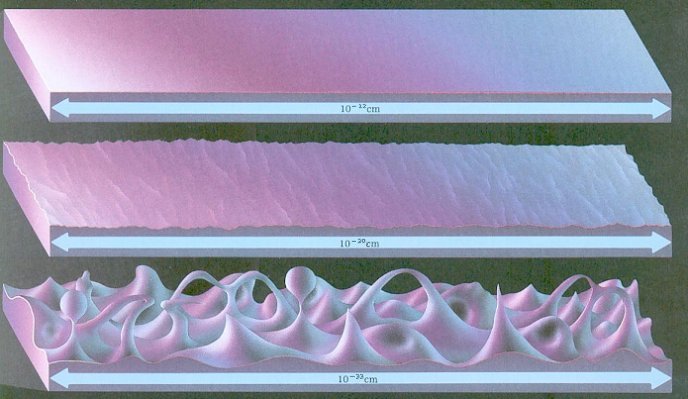
[ "About 10Ė35 centimeters." ] .
p. 176.
"In M-theory network of mathematical models, spacetime has ten or eleven dimensions."
"On the other hand if we probe to very short distances using extremely high energy particles, we should see that spacetime was ten- or eleven-dimensional."
p. 178.

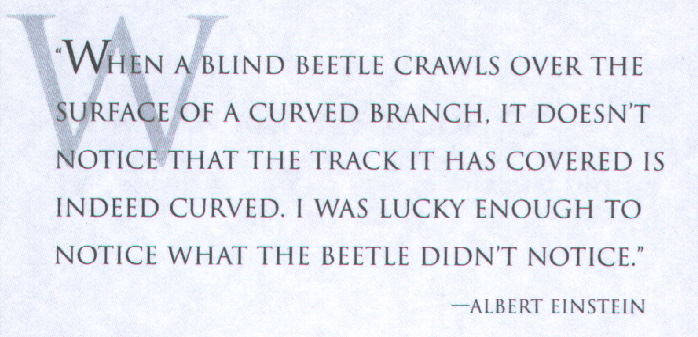
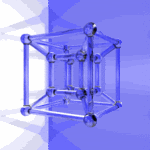 A four dimensional cube.
A four dimensional cube.
"Similarly spacetime may look four dimensional to us, but appear ten- or eleven-dimensional when probed with very high energy particles."
More about extra dimensions
p. 179.
"Matter and nongravitational forces like the electric force would be confined to the brane. This everything not involving gravity would behave as it would in four dimensions."
"On the other hand, gravity in the form of curved space would permeate the whole bulk of the higher dimensional spacetime.
pp. 180-181.
"In this brane world, we would live on one brane but there would be another 'shadow' brane nearby. Because light would be confined to the branes and would not propagate through the space between, we could not see the shadow world. But we would feel the gravitational influence of matter on the shadow brane."
p. 184.
"Gravity might be quite strong in the fundamental theory but the spreading of the gravitational force in extra dimensions would mean it would be weak at large distances on the brane on which we live."
p. 199.
Einstein's significance | Comprehending time | Envisioning spacetime | Hidden existences | Hawking's views | Book's contents | Historical dates to know | vocabulary
Special relativity | Curvature of spacetime | Time | General relativity | Strings | Universal expansion | Time travel?
Terms
Einstein's significance | Comprehending time | Envisioning spacetime | Hidden existences | Hawking's views | Book's contents | Historical dates to know
A "Quark" is a charged elementary particle occupying spacetime and existing in six varieties comprising protons and neutrons.
Kaku, on quantum mechanics and Einstein's unfinished "unified field theory."
Spacetime is a four-dimensional space where events are points in that space.
By extrasensory meaning that you can touch or apprehend and see or perceive three dimensions but you cannot use these senses to perceive or apprehend time's passing.
Max Planck Institute: "General Relativity," explained on-line; a web page.
Strings – "In string theory the basic objects are not particles which occupy a single point in space, but one dimensional strings.
"different oscillations of a string give rise to different masses and force charges."
p. 52
Strings are "A fundamental one-dimensional object."
p. 207.
Tongue-in-cheek called the "God particle" since the Higgs field with its associated boson is considered an energy field that permeates the entire universe; hence an essential ingredient in all existence. [See: Don Lincoln at Fermilab]
As physicist and writer Sean M. Carroll explains: "you need to explain two distinct things: first, that there is a Higgs field filling space that interacts with the particles moving through it and giving some of them mass; and second, that the Higgs boson is the particle we observe when we interact with a vibration in that field.
Both of these ideas are part of quantum field theory, which we generally don’t try to explain in physics popularizations, so it’s more than a few seconds of work to get them across."The Higgs field is filled with Higgs bosons in much the same way that H2O molecules fill the fluid, ice, or gas that is the compound we call water.
Higgs boson is an important subatomic particle that has an accompanying field; that field is the source of mass for other subatomic particles that make up all the matter in the material world.
"On 4 July 2012, the ATLAS and CMS experiments at CERN's Large Hadron Collider announced they had each observed a new particle in the mass region around 126 GeV. This particle is consistent with the Higgs boson predicted by the Standard Model." CERN
"The Higgs mechanism answers the fundamental question of why most of elementary particles have masses. Without the Higgs, everything from stars to atoms would not exist."Sean M. Carroll is a research professor in the Department of Physics at the California Institute of Technology. He is a theoretical cosmologist specializing in dark energy and general relativity.
Atoms are essentially empty space with their mass confined to very dense nuclei.
What is an Angstrom, or the atomic diameter's extent?
The dimensions in this model are deceptively wrong.
Periodic Table of the Elements
Earth – Sky magazine
Einstein's significance | Comprehending time | Envisioning spacetime | Hidden existences | Hawking's views | Book's contents | Historical dates to know
Einstein the man | His relativistic insights | On Albert Einstein | The famous equation's meaning
Ian Tattersall | Richard Feynman | Michio Kaku; Einstein's Cosmos | Jacob Bronowski | Stephen Hawking | Ernst Mayr
Science Index | Analysis | Population Index | Global Warming Index | Nature Index | Brief on ideas



